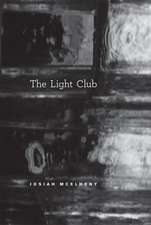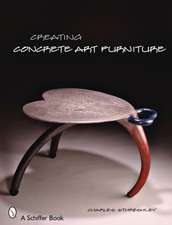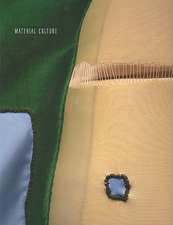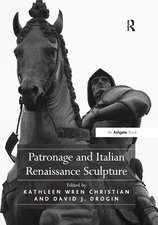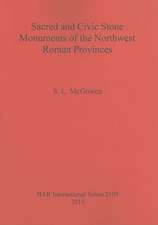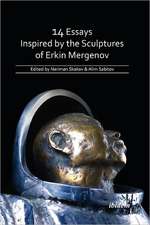The British School of Sculpture, c.1760-1832: British Art: Histories and Interpretations since 1700
Editat de Jason Edwards, Sarah Burnageen Limba Engleză Paperback – 31 mar 2021
The British School of Sculpture, c. 1760–1832 represents the first edited collection exploring one of the most significant moments in British art history, returning to centre stage a wide range of sculpture considered for the first time by some of the most important scholars in the field. Following a historical and historiographical introduction by the editors, situating British sculpture in relation to key events and developments in the period, and the broader scholarship on British art more generally in the period and beyond, the book contains nine wide-ranging case studies that consider the place of antique and modern sculpture in British country houses in the period, monuments to heroes of commerce and the Napoleonic Wars, the key debates fought around ideal sculpture at the Royal Academy, the reception of British sculpture across Europe, the reception of Hindu sculpture deriving from India in Britain, and the relationship of sculpture to emerging industrial markets, both at home and abroad. Challenging characterisations of the period as 'neoclassical', the volume reveals British sculpture to be a much more eclectic and various field of endeavour, both in service of the state and challenging it, and open to sources ranging from the newly arrived Parthenon Frieze to contemporary print culture.
| Toate formatele și edițiile | Preț | Express |
|---|---|---|
| Paperback (1) | 392.08 lei 6-8 săpt. | |
| Taylor & Francis – 31 mar 2021 | 392.08 lei 6-8 săpt. | |
| Hardback (1) | 823.81 lei 6-8 săpt. | |
| Taylor & Francis – 14 dec 2016 | 823.81 lei 6-8 săpt. |
Din seria British Art: Histories and Interpretations since 1700
- 15%
 Preț: 265.79 lei
Preț: 265.79 lei -
 Preț: 310.14 lei
Preț: 310.14 lei -
 Preț: 312.75 lei
Preț: 312.75 lei - 26%
 Preț: 847.14 lei
Preț: 847.14 lei -
 Preț: 469.34 lei
Preț: 469.34 lei - 14%
 Preț: 271.88 lei
Preț: 271.88 lei - 25%
 Preț: 768.69 lei
Preț: 768.69 lei - 16%
 Preț: 302.17 lei
Preț: 302.17 lei -
 Preț: 369.95 lei
Preț: 369.95 lei -
 Preț: 449.41 lei
Preț: 449.41 lei - 17%
 Preț: 259.10 lei
Preț: 259.10 lei - 17%
 Preț: 244.70 lei
Preț: 244.70 lei - 31%
 Preț: 764.13 lei
Preț: 764.13 lei - 28%
 Preț: 708.32 lei
Preț: 708.32 lei - 9%
 Preț: 936.84 lei
Preț: 936.84 lei - 15%
 Preț: 258.59 lei
Preț: 258.59 lei
Preț: 392.08 lei
Nou
Puncte Express: 588
Preț estimativ în valută:
75.02€ • 78.18$ • 62.12£
75.02€ • 78.18$ • 62.12£
Carte tipărită la comandă
Livrare economică 03-17 aprilie
Preluare comenzi: 021 569.72.76
Specificații
ISBN-13: 9780367787240
ISBN-10: 0367787245
Pagini: 278
Dimensiuni: 174 x 246 x 15 mm
Greutate: 0.51 kg
Ediția:1
Editura: Taylor & Francis
Colecția Routledge
Seria British Art: Histories and Interpretations since 1700
Locul publicării:Oxford, United Kingdom
ISBN-10: 0367787245
Pagini: 278
Dimensiuni: 174 x 246 x 15 mm
Greutate: 0.51 kg
Ediția:1
Editura: Taylor & Francis
Colecția Routledge
Seria British Art: Histories and Interpretations since 1700
Locul publicării:Oxford, United Kingdom
Cuprins
Contents
List of Illustrations
Acknowledgements
Notes on Contributors
1 Jason Edwards, ‘Introduction: Sculpture Victorious, or, The British School, .c1760-1832?’
2 Sarah Burnage, ‘Introduction: The British School of Sculpture – A Case Study’.
3 Joan Coutu, ‘Sculpture and the Forming of National Tastes in the Middle of the Eighteenth Century’.
4 Matthew Craske, ‘Extracting the Meaning of a Pile of Pancakes: An Analysis of Nicholas Read’s Monument to Admiral Tyrrel (1766-1770)’.
5 Sarah Burnage, ‘“Delighting the Common People”: John Bacon’s Monuments to the Earl of Chatham (1778-1784)’.
6 Tomas Macsotay, ‘Artistic Labour and Cosmopolitan Sociability: British Sculptors in Accounts from Late Eighteenth-Century Visitors to Rome’.
7 Roberto Ferrari, ‘Before Rome: John Gibson and the British School of Art’.
8. Martin Myrone: ‘“The Chatterton of Sculpture”: Thomas Procter and the Limits of the British School’.
9 Eleanor Hughes, ‘Smoke and Marble: Thomas Banks’s Monument to Captain George Blagdon Westcott’.
10 Jason Edwards, ‘John Charles Felix Rossi’s Cornwallis Monument (1807-1811) and the Colonial Cosmopolitanism of the British School’.
11 M.G. Sullivan, ‘Cunningham, Chantrey, and the British School of Sculpture’.
Bibliography
Index
List of Illustrations
Acknowledgements
Notes on Contributors
1 Jason Edwards, ‘Introduction: Sculpture Victorious, or, The British School, .c1760-1832?’
2 Sarah Burnage, ‘Introduction: The British School of Sculpture – A Case Study’.
3 Joan Coutu, ‘Sculpture and the Forming of National Tastes in the Middle of the Eighteenth Century’.
4 Matthew Craske, ‘Extracting the Meaning of a Pile of Pancakes: An Analysis of Nicholas Read’s Monument to Admiral Tyrrel (1766-1770)’.
5 Sarah Burnage, ‘“Delighting the Common People”: John Bacon’s Monuments to the Earl of Chatham (1778-1784)’.
6 Tomas Macsotay, ‘Artistic Labour and Cosmopolitan Sociability: British Sculptors in Accounts from Late Eighteenth-Century Visitors to Rome’.
7 Roberto Ferrari, ‘Before Rome: John Gibson and the British School of Art’.
8. Martin Myrone: ‘“The Chatterton of Sculpture”: Thomas Procter and the Limits of the British School’.
9 Eleanor Hughes, ‘Smoke and Marble: Thomas Banks’s Monument to Captain George Blagdon Westcott’.
10 Jason Edwards, ‘John Charles Felix Rossi’s Cornwallis Monument (1807-1811) and the Colonial Cosmopolitanism of the British School’.
11 M.G. Sullivan, ‘Cunningham, Chantrey, and the British School of Sculpture’.
Bibliography
Index
Notă biografică
Sarah Burnage is an independent art historian and curator.
Jason Edwards is Professor of Art History at the University of York.
Jason Edwards is Professor of Art History at the University of York.
Descriere
The British School of Sculpture is the first essay collection examining the rich array of sculpture produced and exhibited in Britain between 1768 and 1837. Featuring nearly 60 illustrations, many never reproduced before, and combining essays from leading scholars in the field with exciting new voices, the volume challenges the notion that neoclass

